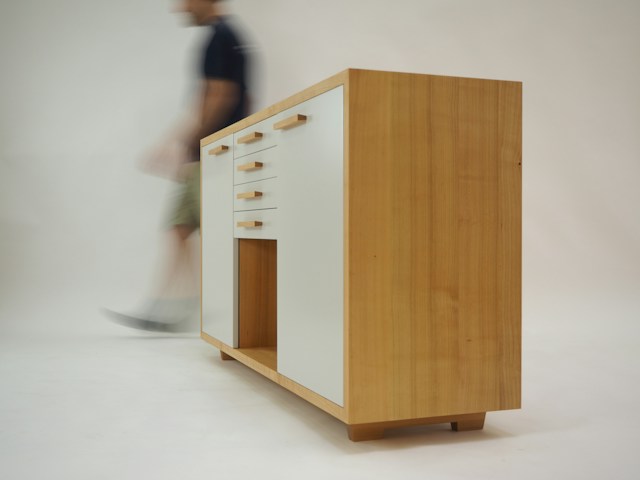Furniture making has come a long way from the days of constructing complex pieces out of wood with handmade tools. Today, furniture makers are using innovative materials and techniques, driving the industry forward in an ever-evolving market. From incorporating newer designs into classic pieces to exploring sustainable production methods, it’s clear that the industry is undergoing major changes — but exactly how is innovation revolutionizing furniture making? In this blog post, we’ll be looking at the latest trends in both design and production to explore what makes furniture making such an exciting space for creativity right now.
Renovation Options
Innovation in furniture making is not limited to creating new products. A growing trend in the industry is the renovation of old furniture, providing sustainable alternatives that reduce the environmental impact. This approach, often called “upcycling,” involves repurposing or refurbishing older pieces to fit with modern design sensibilities. The team behind Reborn Renovations says that with the application of creative techniques such as repainting, reupholstering, or even completely reconfiguring a piece, furniture makers are breathing new life into old items. This not only provides a unique aesthetic appeal but also emphasizes the importance of sustainability in an age of disposable culture. This trend is a testament to the industry’s commitment to innovation, creating beautiful and functional pieces while respecting our planet.
Sustainable Materials
In the realm of innovation, the use of sustainable materials marks another significant shift in the furniture industry. Furniture makers are increasingly turning towards eco-friendly alternatives, such as reclaimed wood, bamboo, and recycled metal, as a response to growing environmental concerns. Reclaimed wood, in particular, has gained tremendous popularity due to its rustic appeal and the story it tells of its past life.
Bamboo, on the other hand, is appreciated for its rapid growth and durability, making it a sustainable and sturdy option. Similarly, the use of recycled metal reduces the demand for new mining, thus aiding in environmental conservation. This trend reflects a conscious effort by the industry to create high-quality, aesthetically pleasing pieces that are not only innovative but also environmentally responsible.
Customization Trends
Innovation in furniture making extends to the trend of customization, which is rapidly gaining traction. Consumers increasingly seek out uniquely tailored pieces that reflect their personal style and functional needs, moving away from the ‘one-size-fits-all’ approach. This has been made possible by advancements in technology, like 3D printing and Computer Numerical Control (CNC) machines, which allow for precise, intricate designs that were once impossible or too expensive.
Additionally, the rise of online platforms and configurators enables customers to visualize and make adjustments to their furniture before it’s manufactured, ensuring satisfaction with the final product. This trend towards customization not only revolutionizes the interaction between consumers and furniture makers but also provides an avenue for individual expression and creativity in our living spaces.
Smart Furniture
In the age of IoT (Internet of Things), furniture has not been left behind. One of the latest trends revolutionizing the industry is the advent of smart furniture. These are pieces that incorporate technology to enhance functionality and user convenience. For instance, couches with built-in USB ports and wireless charging spots, tables with touch-sensitive surfaces for controlling smart home devices, or beds with sleep tracking and automatic temperature control features.
Smart furniture can also include pieces designed to optimize space utilization, like modular units that can be reconfigured according to needs, or convertible furniture that can serve multiple purposes, particularly beneficial for urban living with space constraints.
In an era where technology is progressively being embedded into everyday objects, smart furniture represents another leap in innovation, merging style, functionality, and technology. It’s reflective of how furniture makers are constantly pushing boundaries, adapting to changing lifestyles, and catering to the evolving needs and desires of consumers.
3D Printing in Furniture Making
3D printing technology has been a game-changer in the furniture industry, pushing the boundaries of what is possible in design and manufacture. This cutting-edge technology allows for the creation of intricate, complex designs that would be challenging, if not impossible, using traditional methods. Furniture makers are harnessing 3D printing to create stunning, customized pieces, from chairs and tables to decorative items.
Another distinct advantage of 3D printing is its ability to reduce waste. Traditional methods of furniture making often result in material wastage, but 3D printing uses only the exact amount of material needed, thus contributing to sustainability efforts in the industry. Moreover, 3D printing allows for the use of a variety of materials, including recycled plastics, biodegradable materials, and even wood. This enhances the scope for innovation in sustainable furniture design.
The current developments in 3D printing technology hint at a future where customers might be able to print their own customized furniture at home, revolutionizing the furniture industry and the concept of home furnishing. As the technology continues to evolve, 3D printing is set to play an increasingly influential role in the future of furniture making.
In conclusion, innovation in furniture making is transforming the industry, from using sustainable materials and producing customized pieces to incorporating technology like 3D printing and smart features. These trends not only cater to changing consumer demands but also drive the industry towards a more sustainable, creative, and exciting future. With continuous advancements and an unwavering focus on customer needs, it’s safe to say that the furniture industry is set to keep evolving, bringing new and innovative designs into our homes for years to come.







